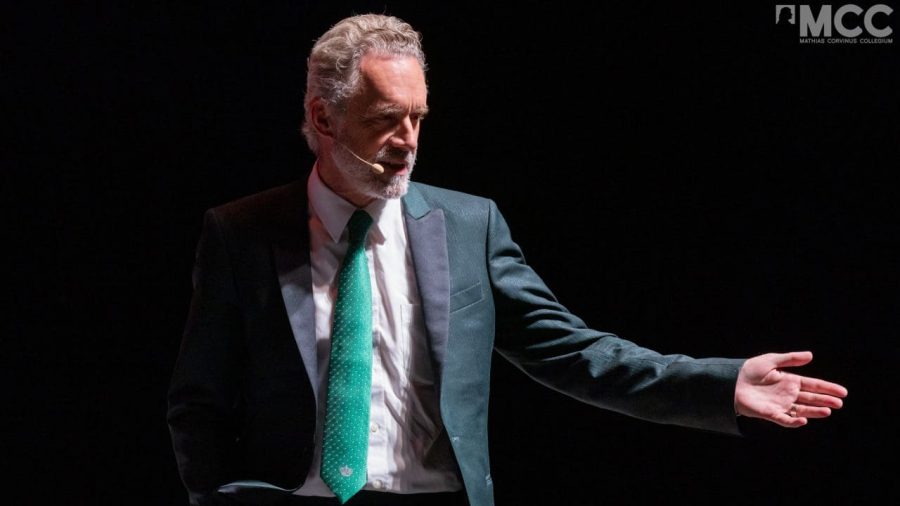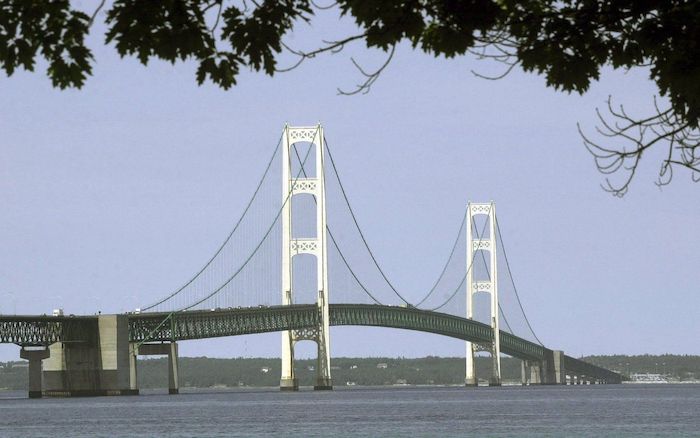Frontier Centre for Public Policy
How Canadians lost the rule of law

From the Frontier Centre for Public Policy
Universal problems are evident in the rejection of Jordan Peterson’s appeal against Ontario’s College of Psychologists (CPO) in Divisional Court. They had sought to re-educate him as a condition for retaining his license—because he openly ridiculed public figures. But as Dr. Peterson related in the National Post, October 11, they’ve failed to find a brainwasher for him.
Precedent now confirms that unaccountable tribunals may override apparent Charter rights. That may declare as unacceptable anyone’s contrary opinion or peaceful protest. Dr. Peterson’s case follows the way the courts clobbered supporters of the 2022 Freedom Convoy protest on Parliament Hill. Now members of all regulated professions are especially at risk, including doctors, lawyers and teachers. Instead of protecting citizens from overreach, the courts have become the instrument for enforcing tyranny.
As the Toronto Star reported on the first press conference by Chief Justice Richard Wagner in 2018, he said his court was “the most progressive in the world.” Today, progressive is synonymous with the absurdities that Dr. Peterson ridiculed. Wanjiru Njoya, a legal scholar at the University of Exeter has been quoted as saying that the courts automatically define as unreasonable any perspectives falling outside progressive boundaries.
A further foundational problem is that judges now routinely preside over cases where they have an obvious bias or personal connection, and then defer to those interests. Canadian judges should follow this admonition in the American Judicial Code? “Any justice, judge, or magistrate judge … shall disqualify himself in any proceeding in which his impartiality might reasonably be questioned.”
Justice Paul Schabas wrote the Decision for Dr. Peterson’s appeal before Divisional Court. However, he had previously been involved, personally, on the side of the argument opposite that of Dr. Peterson. In June 2018, as head of the Law Society of Ontario (LSO), he oversaw the imposition on lawyers of their controversial Statement of Principles (SOP). As a condition of licensing, it required a commitment to Equity, Social and (Corporate) Governance (ESG). Later, the LSO withdrew it following protests like African-Canadian Elias Munshya’s in Canadian Lawyer: “Lawyers play an essential role in our society; that role, however, does not include becoming state agents that parrot state-sponsored speech.”
Chief Justice Wagner recently confirmed that courts may now freely override common law precedent. He said that: “Apart from considering [historic] decisions as part of our legal cultural heritage, no one today will refer to a decision from 1892 to support his claim.” He added that “sometimes a decision from five years ago is an old decision ….”
Accordingly, the Supreme Court had simply disregarded century-old precedents when declaring Marc Nadon ineligible to join their club. My book Justice on Trial explains that many earlier appointments did not meet their newfound qualifications.
The subjective word “reasonable” supports much of Canada’s problematic jurisprudence. Absent objective criteria, judges reward friends and crush others as they may.
Justice Schabas said several comments similar to this one were unacceptable: “Dr. Peterson posted a tweet in May 2022, in which he commented on a Sports Illustrated Swimsuit Edition cover with a plus-sized model, saying: ‘Sorry. Not Beautiful. And no amount of authoritarian tolerance is going to change that.’”
Dr. Peterson objected that the CPO’s Code of Ethics should not constrain such “off duty opinions.” The Code says “[p]ersonal behaviour becomes a concern of the discipline only if it is of such a nature that it undermines public trust in the discipline as a whole or if it raises questions about the psychologist’s ability to carry out appropriately his/her responsibilities as a psychologist.” So which magazines’ cover pictures are not of public interest?
Justice Schabas continued, “The [CPO’s investigating] Panel also noted Dr. Peterson’s reliance on the Supreme Court’s decision in Grant v. Torstar, 2009 SCC 61, [2009] 3 SCR 640, a defamation case which held at para. 42, that “freedom of expression and respect for vigorous debate on matters of public interest have long been seen as fundamental to Canadian democracy … all Canadian laws must conform to it.” Why did Justice Schabas override this settled law?
Europe’s Charter of Fundamental Rights says, “Everyone has the right to freedom of expression. This right shall include freedom to hold opinions and to receive and impart information and ideas without interference by public authority and regardless of frontiers.” So how can a right be fundamental in other free and democratic countries but not in Canada?
And why did the court of Chief Justice Wagner decline to hear Dr. Peterson’s appeal and allow Justice Schabas’ decision to stand? No prize for your answer!
As long advocated by The Globe & Mail and The Toronto Star, Dr. Peterson’s case shows the need to end self-regulation and in-house discipline for lawyers and judges. That happened for lawyers for England and Wales in 2007. So why not in Canada?
Ottawa resident Colin Alexander’s latest books are Justice on Trial: Jordan Peterson’s case shows the need to fix a broken system; and Ballad of Sunny Ways: Popular traditional verse about living, loving and money.
Education
Our Kids Are Struggling To Read. Phonics Is The Easy Fix

From the Frontier Centre for Public Policy
One Manitoba school division is proving phonics works
If students don’t learn how to read in school, not much else that happens there is going to matter.
This might be a harsh way of putting it, but it’s the truth. Being unable to read makes it nearly impossible to function in society. Reading is foundational to everything, even mathematics.
That’s why Canadians across the country should be paying attention to what’s happening in Manitoba’s Evergreen School Division. Located in the Interlake region, including communities like Gimli, Arborg and Winnipeg Beach, Evergreen has completely overhauled its approach to reading instruction—and the early results are promising.
Instead of continuing with costly and ineffective methods like Reading Recovery and balanced literacy, Evergreen has adopted a structured literacy approach, putting phonics back at the centre of reading instruction.
Direct and explicit phonics instruction teaches students how to sound out the letters in words. Rather than guessing words from pictures or context, children are taught to decode the language itself. It’s simple, evidence-based, and long overdue.
In just one year, Evergreen schools saw measurable gains. A research firm evaluating the program found that five per cent more kindergarten to Grade 6 students were reading at grade level than the previous year. For a single year of change, that’s a significant improvement.
This should not be surprising. The science behind phonics instruction has been clear for decades. In the 1960s, Dr. Jeanne Chall, director of the Harvard Reading Laboratory, conducted extensive research into reading methods and concluded that systematic phonics instruction produces the strongest results.
Today, this evidence-based method is often referred to as the “science of reading” because the evidence overwhelmingly supports its effectiveness. While debates continue in many areas of education, this one is largely settled. Students need to be explicitly taught how to read using phonics—and the earlier, the better.
Yet Evergreen stands nearly alone. Manitoba’s Department of Education does not mandate phonics in its public schools. In fact, it largely avoids taking a stance on the issue at all. This silence is a disservice to students—and it’s a missed opportunity for genuine reform.
At the recent Manitoba School Boards Association convention, Evergreen trustees succeeded in passing an emergency motion calling on the association to lobby education faculties to ensure that new teachers are trained in systematic phonics instruction. It’s a critical first step—and one that should be replicated in every province.
It’s a travesty that the most effective reading method isn’t even taught in many teacher education programs. If new teachers aren’t trained in phonics, they’ll struggle to teach their students how to read—and the cycle of failure will continue.
Imagine what could happen if every province implemented structured literacy from the start of Grade 1. Students would become strong readers earlier, be better equipped for all other subjects, and experience greater success throughout school. Early literacy is a foundation for lifelong learning.
Evergreen School Division deserves credit for following the evidence and prioritizing real results over educational trends. But it shouldn’t be alone in this.
If provinces across Canada want to raise literacy rates and give every child a fair shot at academic success, they need to follow Evergreen’s lead—and they need to do it now.
All students deserve to learn how to read.
Michael Zwaagstra is a public high school teacher and a senior fellow at the Frontier Centre for Public Policy.
Economy
Support For National Pipelines And LNG Projects Gain Momentum, Even In Quebec

From the Frontier Centre for Public Policy
Public opinion on pipelines has shifted. Will Ottawa seize the moment for energy security or let politics stall progress?
The ongoing threats posed by U.S. tariffs on the Canadian economy have caused many Canadians to reconsider the need for national oil pipelines and other major resource projects.
The United States is Canada’s most significant trading partner, and the two countries have enjoyed over a century of peaceful commerce and good relations. However, the onset of tariffs and increasingly hostile rhetoric has made Canadians realize they should not be taking these good relations for granted.
Traditional opposition to energy development has given way to a renewed focus on energy security and domestic self-reliance. Over the last decade, Canadian energy producers have sought to build pipelines to move oil from landlocked Alberta to tidewater, aiming to reduce reliance on U.S. markets and expand exports internationally. Canada’s dependence on the U.S. for energy exports has long affected the prices it can obtain.
One province where this shift is becoming evident is Quebec. Historically, Quebec politicians and environmental interests have vehemently opposed oil and gas development. With an abundance of hydroelectric power, imported oil and gas, and little fossil fuel production, the province has had fewer economic incentives to support the industry.
However, recent polling suggests attitudes are changing. A SOM-La Presse poll from late February found that about 60 per cent of Quebec residents support reviving the Energy East pipeline project, while 61 per cent favour restarting the GNL Quebec natural gas pipeline project, a proposed LNG facility near Saguenay that would export liquefied natural gas to global markets. While support for these projects remains stronger in other parts of the country, this represents a substantial shift in Quebec.
Yet, despite this change, Quebec politicians at both the provincial and federal levels remain out of step with public opinion. The Montreal Economic Institute, a non-partisan think tank, has documented this disconnect for years. There are two key reasons for it: Quebec politicians tend to reflect the perspectives of a Montreal-based Laurentian elite rather than broader provincial sentiment, and entrenched interests such as Hydro-Québec benefit from limiting competition under the guise of environmental concerns.
Not only have Quebec politicians misrepresented public opinion, but they have also claimed to speak for the entire province on energy issues. Premier François Legault and Bloc Québécois Leader Yves-François Blanchet have argued that pipeline projects lack “social licence” from Quebecers.
However, the reality is that the federal government does not need any special license to build oil and gas infrastructure that crosses provincial borders. Under the Constitution, only the federal Parliament has jurisdiction over national pipeline and energy projects.
Despite this authority, no federal government has been willing to impose such a project on a province. Quebec’s history of resisting federal intervention makes this a politically delicate issue. There is also a broader electoral consideration: while it is possible to form a federal government without winning Quebec, its many seats make it a crucial battleground. In a bilingual country, a government that claims to speak for all Canadians benefits from having a presence in Quebec.
Ottawa could impose a national pipeline, but it doesn’t have to. New polling data from Quebec and across Canada suggest Canadians increasingly support projects that enhance energy security and reduce reliance on the United States. The federal government needs to stop speaking only to politicians—especially in Quebec—and take its case directly to the people.
With a federal election on the horizon, politicians of all parties should put national pipelines and natural gas projects on the ballot.
Joseph Quesnel is a senior research fellow with the Frontier Centre for Public Policy.
-

 Business2 days ago
Business2 days agoChina, Mexico, Canada Flagged in $1.4 Billion Fentanyl Trade by U.S. Financial Watchdog
-

 espionage2 days ago
espionage2 days agoEx-NYPD Cop Jailed in Beijing’s Transnational Repatriation Plot, Canada Remains Soft Target
-

 2025 Federal Election2 days ago
2025 Federal Election2 days agoBREAKING from THE BUREAU: Pro-Beijing Group That Pushed Erin O’Toole’s Exit Warns Chinese Canadians to “Vote Carefully”
-

 Daily Caller2 days ago
Daily Caller2 days agoTrump Executive Orders ensure ‘Beautiful Clean’ Affordable Coal will continue to bolster US energy grid
-

 Daily Caller2 days ago
Daily Caller2 days agoDOJ Releases Dossier Of Deported Maryland Man’s Alleged MS-13 Gang Ties
-

 2025 Federal Election2 days ago
2025 Federal Election2 days agoAllegations of ethical misconduct by the Prime Minister and Government of Canada during the current federal election campaign
-

 Energy2 days ago
Energy2 days agoStraits of Mackinac Tunnel for Line 5 Pipeline to get “accelerated review”: US Army Corps of Engineers
-

 Canadian Energy Centre1 day ago
Canadian Energy Centre1 day agoFirst Nations in Manitoba pushing for LNG exports from Hudson’s Bay






